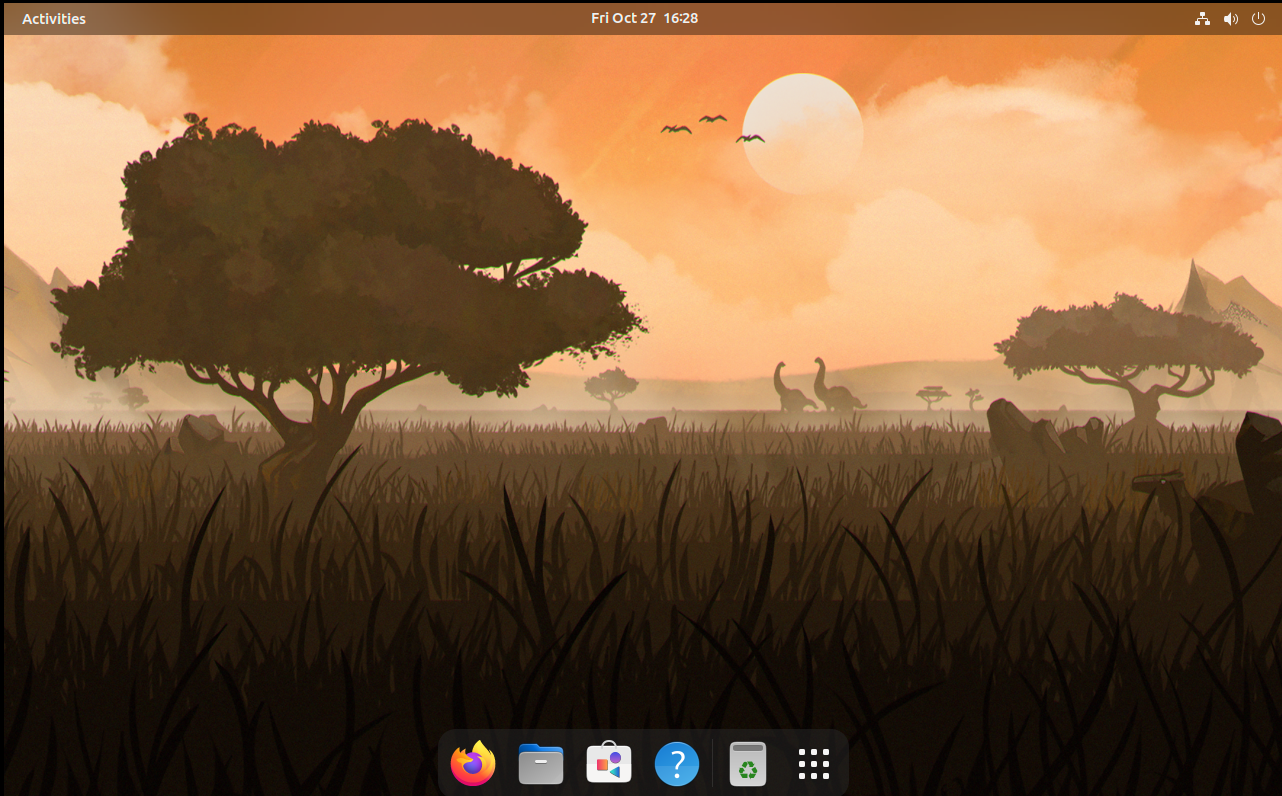From The New Stack
What’s the Linux desktop for the playful developer? 🤔
UwUbuntu
deleted by creator
LFS
I don’t know but non-serious developers use Slackware.
YiffOS
Is that a fork of NixOS?
gentoo
Among OS
NixOS according to my local fetish community.
deleted by creator
deleted by creator
deleted by creator
Everybody knows Linux is primarily used and developed (?) by moms who play FarmVille in terminal.
deleted by creator
uses the GNOME interface
yeah thats a no from me.
You’re just not a serious developer 😒
Plus its just running off Fedora? Easy no.
How did they manage to just take the worst of both and put them together?
It’s a cultural thing at this point.
They just have a different culture than us.
🥱
What a shitty tagline. What have I been doing these past few years, lol?
Ahh you must be a frivolous developer
Or a funny one.
Not being serious enough thats for sure
Hello, fellow goofy developer.
A serious desktop got serious developers who are seriously serious about their serioucity
Are you cereal?
I can’t take that much seriousness.
Seriously?!
Damn, that sounds serious.
as serious as a heart attack
I don’t get it. What’s the spirit of ubuntu? Is the underlying OS based on ubuntu instead of fedora?
What’s the actual difference to fedora silverblue?
Half the answer to “why did you make your own linux?” is that it’s awesome being able to revert back to the original fedora OS.
Because it follows a cloud-native approach, the end user has the flexibility to rebase back to the stock Fedora or any Universal Blue image. It’s more like having someone install, configure, and maintain a polished Fedora setup for you.
And the other half doesn’t provide any info either
Bluefin utilizes Fedora’s OCI features to compose and build an OS image. This process is overseen by a well-structured community that is committed to automation and sustainability. The end result is akin to a configuration management tool like Ansible or Salt, but without the typical challenges associated with maintaining a custom distribution.
What’s the actual difference to fedora silverblue?
Hi! Co-maintainer here, you can find the differences in the github repo: https://github.com/ublue-os/bluefin
And there’s a doc page going over it here: https://universal-blue.discourse.group/docs?topic=41
If you have any other questions I’d be happy to answer them!
Hi! Co-maintainer here, you can find the differences in the github repo: https://github.com/ublue-os/bluefin
I checked the github page you link and can find no differences listed, just three bullet points that appear to have be written by a PR team. You say an Ubuntu Desktop experience melded with Fedora Silverblue. Don’t you mean GNOME? Ubuntu isn’t a desktop environment, it’s a Linux distro. GNOME is the desktop environment. That seems like an embarassing blunder in your copy when you claim to be building a distro for “serious” developers.
If it weren’t open source, I’d think this was a scam. Weird choice.
IIRC, Bluefin uses the GNOME extensions that Ubuntu uses - so yes, GNOME in the same way that the current version of Pop!_OS is GNOME + their own extensions.
Instead of linking to articles full of buzz-words, can you explain what’s the difference between this distro and Fedora Silverblue?
I’m guessing the “spirit of Ubuntu” means they took Silverblue and preconfigured some stuff.I linked to it, here it is again: https://universal-blue.discourse.group/docs?topic=41#features-9
And the previous link was directly to the source code of the image.
Tbo, I lost interest in it.
I’ve spend a good amount of time on it trying to figure out what the project is about. Even after clarifying the confusion and multiple people asking for clarification from your side and multiple upvotes, there’s nothing from your side. You reference to something that has been saying nothing for many people.
You didn’t even clarify the magical wonders of ubuntu in your project. I kind of feel insulted if I think properly about it.
Delete following part of your post
Bluefin
A familiar(ish) Ubuntu desktop for Fedora Silverblue. It strives to cover these three use cases:
For users it provides a system as reliable as a Chromebook with near-zero maintenance, with the power of Ubuntu and Fedora fused together. For developers we endeavour to provide the best cloud-native developer experience by enabling easy consumption of the industry’s leading tools. These are included in dedicated bluefin-dx and bluefin-dx-nvidia images. For gamers we strive to deliver a world-class gaming experience via Flathub or bazzite-arch “Evolution is a process of constant branching and expansion.” - Stephen Jay Gould This image heavily utilizes cloud-native concepts.
GNOME Software with Flathub: Use a familiar software center UI to install graphical software System designed for automatic staging of updates If you’ve never used an image-based Linux before just use your computer normally Don’t overthink it, just shut your computer off when you’re not using it Should I trust you? This is all hosted, built, and pushed on GitHub. As far as if I’m a trustable fellow, here’s my bio. If you’ve made it this far, then hopefully you’ve come to the conclusion on how easy it would be to build all of this on your own trusted machinery. :smile:
The difference between silverblue and your image is that silverblue is signed by fedora and yours isn’t. There’s no reason for anyone but you to use the image. Even if I were to us tailscale and fish, I’d be better off with silverblue.
Here maybe it’s easier if I just paste in the differences:
-
Ubuntu-like GNOME layout.
- Includes the following GNOME Extensions:
- Dash to Dock - for a more Unity-like dock
- Appindicator - for tray-like icons in the top right corner
- GSConnect - Integrate your mobile device with your desktop
- Blur my Shell - for that bling
- Includes the following GNOME Extensions:
-
GNOME Software with Flathub:
- Use a familiar software center UI to install graphical software
-
Built on top of the the Universal Blue main image
- Extra udev rules for game controllers and other devices included out of the box
- All multimedia codecs included
- System designed for automatic staging of updates
- If you’ve never used an image-based Linux before just use your computer normally
- Don’t overthink it, just shut your computer off when you’re not using it
-
Starship is enabled by default to give you a nice shell prompt
-
Solaar - included for Logitech mouse management along with
libratbagd -
Tailscale - included for VPN along with
wireguard-tools -
zshandfishoptional -
Built-in Ubuntu user space
-
<kbd>Ctrl</kbd>-<kbd>Alt</kbd>-<kbd>u</kbd> - will launch an Ubuntu image inside a terminal via Distrobox and your home directory will be transparently mounted for the Ubuntu image to access
-
A BlackBox terminal is used just for this configuration
-
Use this container for your typical CLI needs or to install software that is not available via Flatpak or Fedora
-
Optional ubuntu-toolbox image with Python, and other convenience development tools.
just distrobox-bluefinto get started. To configurejustfollow the guide. -
Optional universal image with Python, Node.js, JavaScript, TypeScript, C++, Java, C#, F#, .NET Core, PHP, Go, Ruby, and and Conda.
just distrobox-universalto get started -
just assembleshortcut to declaratively build distroboxes defined in/etc/distrobox/distrobox.ini -
Refer to the Distrobox documentation for more information on using and configuring custom images
-
GNOME Terminal - <kbd>Ctrl</kbd>-<kbd>Alt</kbd>-<kbd>t</kbd> - will launch a host-level GNOME Terminal if you need to do host-level things in Fedora (you shouldn’t need to do much).
The difference between silverblue and your image is that silverblue is signed by fedora and yours isn’t.
Of course Fedora only signs Fedora images, we sign our own images.
There’s no reason for anyone but you to use the image. Even if I were to us tailscale and fish, I’d be better off with silverblue.
Then use Silverblue! If you don’t understand the features of something then you might not be the target audience!
-
This is the umpteenth time I’ve come across this project but I just don’t get what they’re going for here.
These are just custom images, are they not?
If I wanted Ubuntu I’d use Ubuntu. If I wanted Fedora I’d use Fedora. Maybe I’m not getting it but I wonder how big of a population that’s out there that wants some Ubuntu mixed in with a touch of Fedora and some buzzword salad thrown into the mix.
Sorry, I only know silly, goofy developers. Can’t recommend this to anyone.
Yeah same, I’m a silly goose developer, can’t use this. Sorry!
I prefer to have a minimal linux ditro and install the apps I need.
“Cloud native” technology is double speak for your shit is running on other people’s computers who will be tracking your use and selling it to pay for server upkeep and also maybe profit?
In this case it’s referring to the fact that the OS is built upon the same containerization technology used on cloud platforms such as Kubernetes. As a marketing tool it’s a bit buzzwordy, but it’s not about running the core OS components outside of the physical machine here.
‘Containerized’ would be more accurate.
Both are incredibly stupid attempts to convince people they need something they don’t.
You all should look into a ‘blue ocean’ business strategy. Lots of shitty businessmen are constantly trying to push ‘new’ things and have a vested interest in convincing laymen of their necessity.
Needs are born from solving problems, not making them.
Yea and coming with Visual Studio pre installed? No thanks
deleted by creator
deleted by creator
deleted by creator
“I use bluefin btw” It doesn’t feel nice.
Linux desktop will, most likely, fail for: Developers and sysadmins, because not everyone is using Docker and Github actions to deploy applications to some proprietary cloud solution. Finding a properly working FTP/SFTP/FTPS desktop client (similar WinSCP or Cyberduck) is an impossible task as the ones that exist fail even at basic tasks like dragging and dropping a file.
Linux desktop is great, I love it but I don’t sugar coat it nor I’m delusional like most posting about it.
It all comes down to a question of how much time (days? months?) you want to spend fixing things on Linux that simply work out of the box under Windows for a minimal fee. Buy a Windows license and spend the time you would’ve spent dealing with Linux issues doing your actual job and you’ll, most likely, get a better ROI.
https://tadeubento.com/2023/linux-desktop-a-collective-delusion/
Also, immutable distributions are a scam:
Guess what happens whenever people popularize immutable distros as the next hype in tech that will make everything better? You get yourself into a totally unreasonable and avoidable ecosystem just because those systems won’t cut it for most use cases… same that happened with Docker/Kubernetes.
I’ve been saying it for year and nobody cares: nowadays those companies are all about re-creating and reconfiguring the way people develop software so everyone will be hostage of their platforms. We see this in everything now Docker/DockerHub/Kubernetes and GitHub actions were the first sign of this cancer. We now have a generation of developers that doesn’t understand the basic of their tech stack, about networking, about DNS, about how to deploy a simple thing into a server that doesn’t use some Docker BS or isn’t a 3rd party cloud xyz deploy-from-github service.
The latest endeavor in making everyone’s hostage is the new Linux immutable distribution trend. Immutable distros are all about making thing that were easy into complex, “locked down”, “inflexible”, bullshit to justify jobs and payed tech stacks and a soon to be released property solution.
We had Ansible, containers, ZFS and BTRFS that provided all the required immutability needed already but someone decided that is is time to transform proven development techniques in the hopes of eventually selling some orchestration and/or other proprietary repository / platform / BS like Docker / Kubernetes does.
“Oh but there are truly open-source immutable distros” … true, but this hype is much like Docker and it will invariably and inevitably lead people down a path that will then require some proprietary solution or dependency somewhere that is only required because the “new” technology itself alone doesn’t deliver as others did in the past.
As with CentOS’s fiasco or Docker it doesn’t really matter if there are truly open-source and open ecosystems of immutable distributions because in the end people/companies will pick the proprietary / closed option just because “it’s easier to use” or some other specific thing that will be good on the short term and very bad on the long term. This happened with CentOS vs Debian is currently unfolding with Docker vs LXC/RKT and will happen with Ubuntu vs Debian for all those who moved from CentOS to Ubuntu.
Those popularizing immutable distributions clearly haven’t had any experience with it before the current hype. Let me tell you something, immutable systems aren’t a new thing we already had it with MIPS devices (mostly routers and IOTs) and people have been moving to ARM and mutable solutions because it’s better, easier and more reliable.
Let people enjoy things.
What if I enjoy ruining other people’s fun?
There is always some solutionizm in tech, but I’m interested in containerzation as a solution to problems I’ve had with configure drift building up on my systems and make it easier to share and work with the community.
The immutable desktop work to me is specifically working on bridging the gap between the UX of a local admin (you know wanting custom configuration and fast reaction to user input) and the industrial expectations of being able to test and track every change and reduce the number of different pieces you need to operate a system.
Hopefully we can lose some of the industries bad habits though. Like “relying on this proprietary piece is ok because we can move faster” or making other excuses as if you are going to have to explain to your boss why some metric looks bad instead of just trying to make the best system or solution we can.
deleted by creator
The amount of times my Windows installation(s) broke is just as high as the amount of times my Linux installations had issues. The article you quoted seems to be from someone with more Windows experience than Linux experience.
One example: FileZilla is a capable GUI SFTP and FTP client, but so is nearly every file manager. I can drag and drop files from Dolphin into a fuse mounted FTP, SMB or SFTP folder just fine. Skill issue?
EDIT: omg, I just realised they use WinSCP for deploying applications. It really seems like a skill issue since you can automate that even without proprietary clouds. I can probably replace this person with a PowerShell script, which is even more efficient than them doing their job on Windows.
All operating systems sadly need lots of maintenance nowadays. The main reason I use Linux is that I feel in control of the system and the vendor doesn’t actively try to fuck with my installation.
I care!















